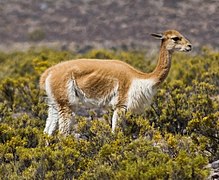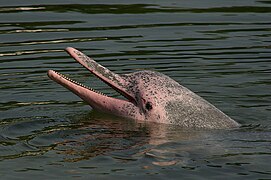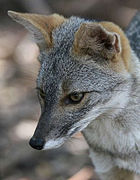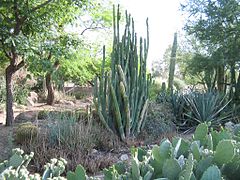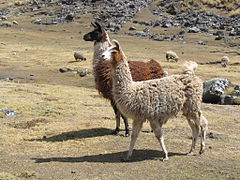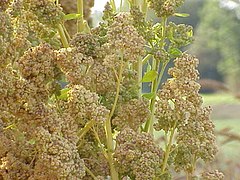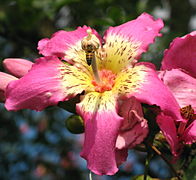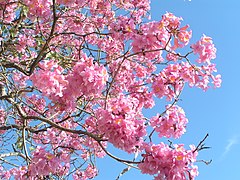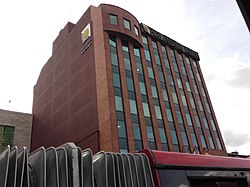Andean Community
The Andean Community (CAN), before 1969 known as the Andean Pact or Andean Group, It is a political community of law constituted as an international organization born to achieve an integral, balanced and autonomous development in common of the Andean States and peoples. It is made up of four Andean States and was established with the entry into force of the Cartagena Agreement on May 26, 1969.
The Andean Integration Process began with the signing of the Cartagena Agreement on May 26, 1969. It has bodies and institutions that are part of the Andean Integration System (SAI). The headquarters of the General Secretariat is in Lima, Peru, and the headquarters of the Andean Parliament in Bogotá, Colombia.
The Andean Community brings together almost 109 million inhabitants, in an area of 3,798,000 square kilometers, whose nominal Gross Domestic Product is estimated to amount to 706,903 million dollars in 2018.
Symbols
- The Emblem of the Andean Community was adopted at the beginning of the Andean Integration Process. It is composed of five elements:
- A semi-circle which represents the rainbow, an ancient symbol of alliance and peace that among the indigenous peoples of the Andes was always the sign of fertility.
- Two columns that represent the "andenes", takanas or terraces built to make possible the cultivation of the land. It is the graphic representation of vertical control of a maximum of ecological floors, typical of Andean cultures.
- A channel which expresses the right half, the center, the guide. It is not separation but the bridge, transition, mediation, balance, the space of reciprocity. It's also the way you have to go. It's the Qhapaq Ñan or path that civilizations follow.
- A single stroke or line which represents harmony, the inseparable unity of duality and diversity.
- The golden color of the figure has as meaning the process of knowledge, the dawn, the action of illumination, like the sun. This emblem "is more than just a geometric figure of clean and elegant lines." Both the interpretation of its creators and the later ones, based on the Andean cosmovision, show us that, indeed, the symbol of CAN is an expression of the Amazonian Andean identity and its meaning is loaded with the multiple cultural roots.
- La Flag of the Andean Community for the first time in the courtyard of honor of the headquarters of the General Secretariat of the Andean Community. Since then, its use has accompanied the main acts of the Andean integration process and the meetings of the Andean Presidential Council. The color of the flag is the target of peace, harmony and unity in diversity. The CAN emblem is inserted in the central place and provides, with its golden colour, the strength of the ideals in which the integration process is inspired.
Historical background
Since pre-Columbian times, there have been attempts to unify the areas of the mountain range; The Inca empire would achieve this, unifying much of the South American Andean zone, until its conquest by the Spanish in 1533.
The first attempts at an Andean union would come from the independence era; Simón Bolívar would attempt the creation of a single State with all the former Spanish colonies, which would end with the creation of Gran Colombia from the unification of the signatories of the congress of Panama, Venezuela, Ecuador and New Granada (Current Colombia); The country dissolved at the beginning of the 1830s, after the death of Simón Bolívar, due to the political differences that existed between supporters of federalism and centralism, as well as regional tensions between the peoples that made up the republic.
In 1836, after the pact between the Peruvian president Luis José de Orbegoso and the Bolivian president Andrés de Santa Cruz, the Peru-Bolivian Confederation would be created, another attempt to unite Andean nations, until it was dissolved after its defeat in the Confederate War in 1839.
History
- The Andean Community was established in 1969 with the Cartagena Agreement with Colombia, Ecuador, Peru, Bolivia and Chile.
- In 1973 Venezuela joined the Andean Pact.
- In 1976, Augusto Pinochet announced the withdrawal of Chile from Andean Covenant aducing economic incompatibility.
- In 1979, the Andean Court of Justice, the Andean Parliament and the Andean Council of Ministers for Foreign Affairs were created after the signing of a treaty.
- In 1983, the Andean Court of Justice became operational.
- In 1991, the presidents of the Community approved the policy of Open heavens and intensify subregional integration.
- In 1992, Peru temporarily suspended its membership due to its aggressive economic liberalization programme.
- In 1993, the Andean Free Trade Zone between Bolivia, Colombia, Ecuador and Venezuela became operational.
- In 1994, the Common External Tariff was approved.
- In 1996 the presidents of Bolivia, Colombia, Ecuador, Peru, the personal representative of the president of Venezuela, and the president of Panama, as an observer, gathered in the city of Trujillo, adopted the Modifying Protocol of the Agreement of Andean Subregional Integration (Agreement of Cartagena), with which the Andean Community and the Andean Integration System are created.
- In 1997, an agreement was reached with Peru for the gradual incorporation of that country into the Andean Free Trade Zone.
- In 2005, Mercosur countries were incorporated as associate members, and the Andean Community countries joined Mercosur in equal quality.
- On April 19, 2006, Venezuelan President Hugo Chávez announced the withdrawal of Venezuela from the Andean Community. The argument of his withdrawal was the FTAs signed by Peru and Colombia with the United States, considering the same Community as a "dead" entity.
- On 20 September 2006, the Andean Council of Foreign Ministers, meeting in New York, approved the reinstatement of Chile to CAN as an associate member.
- In October 2011, Spain joined the CAN as an observer.
- In 7 December 2012, Bolivia was accepted by the Mercosur countries to initiate the incorporation protocols to achieve full adherence to Mercosur in 4 years.
- In 2022, the elimination of the international 'roaming' charges on the mobile phone since January 1st within the Andean Community began.
Members of the Andean Community
Venezuela was a full member until 2006. Chile was originally a member from 1969-1976, but withdrew during the military dictatorship of Augusto Pinochet due to incompatibilities between the liberal economic policy of that country's regime and the integration policies of the DOG.
Chile was later admitted as an observer member in 2004 and as an associate member on September 21, 2006. This incorporation took place within the framework of the meeting of the Andean Council of Foreign Ministers in New York, on the occasion of the General Assembly of the UN, when a community regulation was approved (Decision 645) that granted it the status of member country associated with the other countries. However, this does not imply the re-entry of Chile to the CAN.
| Member States |
|---|
| Observer States |
|---|
Geography
The Andean Community occupies approximately a quarter of the South American continent, having coasts on both oceans, the Pacific and the Atlantic; its location if we divide the continent into quadrants would be the first, that is, on the upper left side.
The geography of the Andean Community is diversified, with arid, semi-arid, mountainous, tropical, subtropical and temperate plain areas, the Andes Mountains being a determining factor in its geography.
Biodiversity
Due to its large dimension bathed by two oceans and being part of the Amazon River Basin, in addition to being dominated by the Andes, wild diversity is very diverse, the four countries of the Andean Community of Nations (CAN) have 25 percent of the biodiversity of the entire planet. Among the diverse variety of flora and fauna in the territories that comprise the CAN we can find:
- Flora and fauna of the Andean Community
Climate
The climate in the CAN varies according to the altitude and latitude of the area, but we could say that it is predominantly tropical, it also has a subtropical climate on the central and southern Pacific coasts, due in part to the influence of the current of Humboldt that comes from the seas of Antarctica, the cold or mountain climate generally occurs along the Andes Mountains and in the highlands such as the Collao Plateau.
Demographics
The population of the CAN is 120,258,102 inhabitants, an approximate estimate for 2017 according to the UN.
The distribution of the population in the Andean Community is very uneven. The concentration of the population occurs in the Andean zones in the case of Colombia and Bolivia, and in the coastal zones in Ecuador and Peru. The less populated areas are found in the jungle region.
Ethnography
The population of the Andean Community is made up of a mixture of different human groups: Amerindians, Europeans, Africans, and a small part of Asians.
| Country | Mestizo and white | Indigenous peoples | People of African descent | Other |
|---|---|---|---|---|
| 73% | 22% | 1% | 4% | |
| 87.6% | 4.3% | 6.8% | 1.4% | |
| 78% | 7% | 7.2% | 7.8% | |
| 66.1% | 25.8% | 3.6% | 4.5% | |
Source:
| ||||
Administrative and commercial policy
Andean Integration System (SAI)
Its purpose is to allow effective coordination among themselves, both economically and in the political and social aspect.
Its main organizations are:
Intergovernmental Organizations
- Andean Presidential Council (Maximum Meeting of Heads of State). Created in 1991.
The Andean Presidential Council is the highest body of the Andean Integration System and is made up of the Heads of State of the member countries of the Cartagena Agreement. It issues guidelines that must be executed by the rest of the institutions and bodies. It functions as an intergovernmental body aimed at coordinating the various wills of each of the Member States. It meets ordinarily once a year.
The functions of the Presidential Council are to define the integration policy, guide actions in matters of interest to the sub-region, evaluate the development of integration, issue pronouncements and examine all questions and issues related to integration.
- Andean Council of Ministers for Foreign Affairs
The Andean Council of Ministers of Foreign Affairs is made up of the Ministers of Foreign Affairs of each of the member countries, which is why it functions as an intergovernmental or coordination body.
It has powers in matters of foreign relations, both in coordinating the foreign policies of each member that affect the sub-region and in the foreign policy of the international organization itself as a subject of international law. Other bodies, such as the Andean Community Commission, have also been assigned powers in matters of foreign policy for their respective areas.
The functions of the Andean Council of Ministers of Foreign Affairs are to formulate the foreign policy of the member countries in matters of subregional interest, to comply with the Council's directives on foreign matters, to sign agreements with third-party countries or organizations, to coordinate the joint position of the member countries in international forums and negotiations and represent the Andean Community in matters and acts of common interest.
- Commission of the Andean Community
The Commission is the body most closely regulated in the Constitutive Treaty of the Andean Community, the Cartagena Agreement. It is made up of plenipotentiary representatives appointed by the governments of each of the member countries. Its functions are all related to the goal of free markets within the Andean subregion. Unlike the previous bodies, in the commission matters are decided by an absolute majority of its members, and not unanimously. This mechanism offers greater flexibility to reach important resolutions without the blocking of any of the members. Since there are only four countries that make up the Andean Community, at least three of them must agree to take a decision from the Commission forward.
The Commission meets three times a year and its attendance is considered mandatory (art. 24 Cartagena Agreement).
Community Organizations
- CAN General Secretariat: its headquarters is in Lima (Peru) and is headed by a general secretary. It was created in August 1997 as an executive and technical body. It has greater powers than Board of the Cartagena Agreement, which worked between 1969 and 1997.
- Court of Justice of the Andean Community, is located in Quito (Ecuador) and is a jurisdictional body. It was created in 1996 and became operational in 1999. It was reformed in 2001.
- Andean Parliament: its headquarters is located in Bogotá (Colombia) and is the legislative branch of the community. It was created on October 25, 1979. Since April 1997, it has been a deliberative body.
The Andean Parliament is made up of national parliamentarians from each of the member countries, so they are indirectly elected. Parliament has consultative rather than executive functions, so it has limited power within the Andean Community.
- CAF-Banco de Desarrollo de América Latina.
- Latin American Reserve Fund.
- Universidad Andina Simón Bolívar.
- Andean Health Agency.
Civil society participation instances
Other bodies within the SAI include:
- Andean Labour Advisory Council.
- Andean Business Advisory Council.
- Advisory Council on Indigenous Peoples.
- Andean Advisory Council of Municipal Authorities.
Economy
Free movement of goods
One of the main achievements of the CAN in the commercial field is the free circulation of goods of Andean origin in the expanded market. Bolivia, Colombia, Ecuador and Peru currently form a free trade zone, that is, a space in which their products circulate freely without paying customs duties of any kind.
Immigration Policy
Free movement of people
Since 2003, citizens of the four Andean Community countries can enter any of them without a passport, just by presenting their respective identity document.
Andean Passport
The Andean Passport was created by means of Decision 504 in July 2001. Decision 504 establishes that its issuance is based on a uniform model that contains minimum harmonized characteristics in terms of nomenclature and security elements. The document is currently issued by Ecuador, Peru and Bolivia. Colombia did adopt the Andean passport, but the legend "Andean Community" does not appear on the passport, as is the case with the passports of Ecuador, Peru and Bolivia. Venezuela also issued the Andean Passport until 2006, the year in which it disincorporated from the Andean Community. For this reason, there are still Venezuelan citizens who have a passport of this model, which continue to be valid until their respective expiration date.
Indicators
| Country | Area (km2) 2015 | Population 2021 | GDP (PPP) 2019 | GDP (PPA) per capita 2019 | Gini Coefficient 2019 | Human Development Index 2019 | Index of fragile States 2021 | Rule of Law Index 2021 | Corruption Perception Index 2021 | Economic freedom index 2022 | Global Peace Index 2021 | Press Freedom Index 2021 | Democracy Index 2021 |
|---|---|---|---|---|---|---|---|---|---|---|---|---|---|
| Bolivia | 1 098 581 | 11 633 371 | 104 694 | 9064 | 41.6 | 0.718 | 74.9 | 0.38 | 30 | 43.0 | 2.140 | 35.47 | 4.65 |
| Colombia | 1 141 748 | 51 049 498 | 772 967 | 15 344 | 51.3 | 0.767 | 79.3 | 0.50 | 39 | 65.1 | 2.694 | 43.74 | 6.48 |
| Ecuador | 256 370 | 17 803 339 | 205 903 | 11 923 | 45.7 | 0.759 | 71.2 | 0.48 | 36 | 54.3 | 2.044 | 32.83 | 5.71 |
| Peru | 1 285 216 | 33 400 410 | 441 976 | 13 327 | 41.5 | 0.777 | 71.4 | 0.49 | 36 | 66.5 | 2.034 | 31.71 | 6.09 |
| Highest quartile | Second quartile | Third quartile | Lower quartile |
Contenido relacionado
John milton hay
Tipperary county
Organization of Petroleum Exporting Countries





